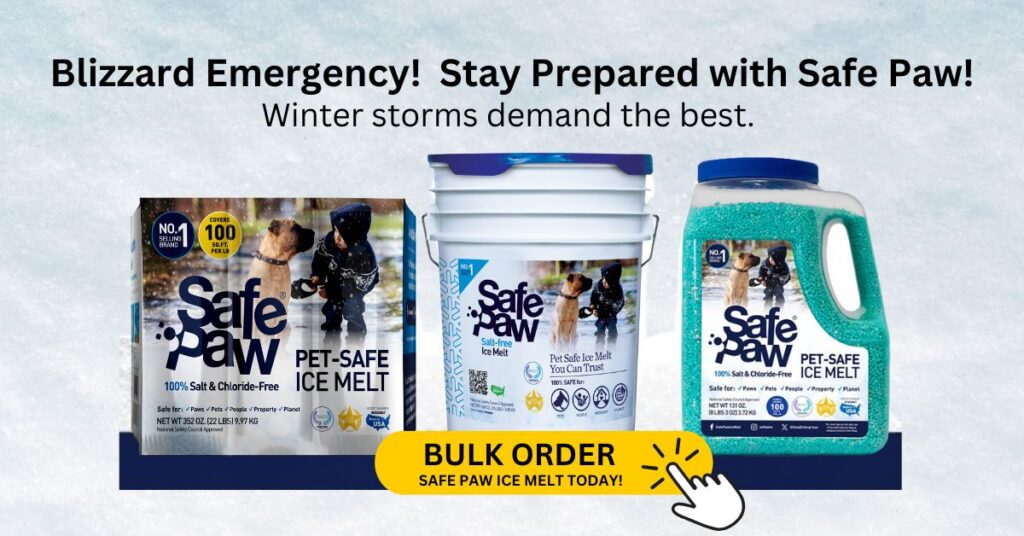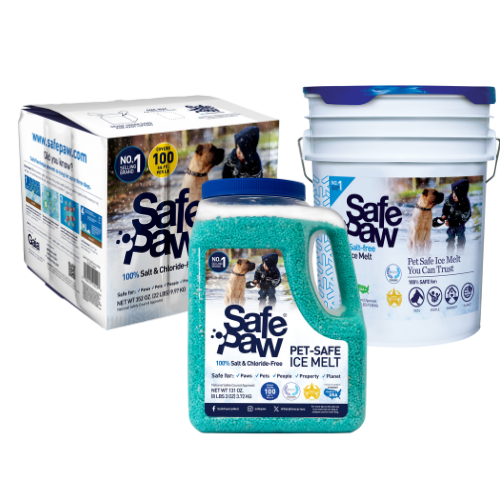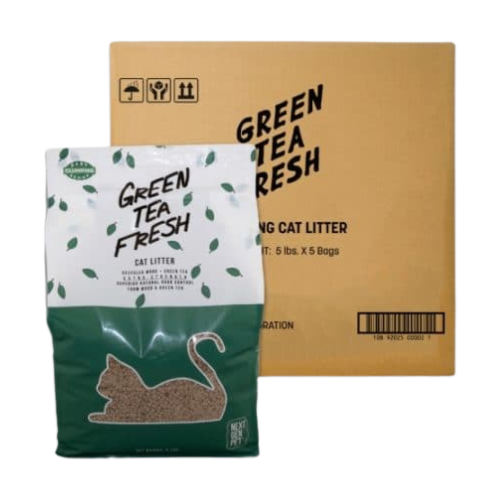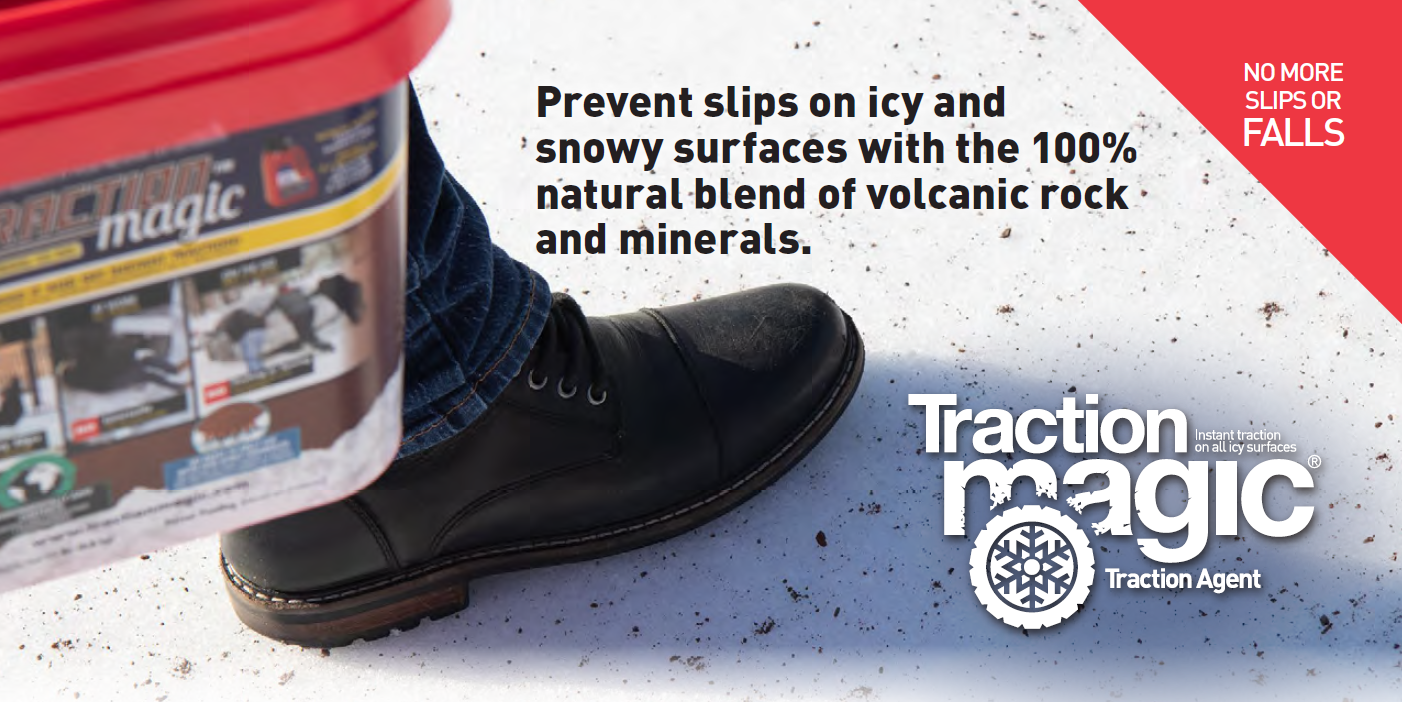The Chemistry Of Deicing: How Does Salt Melt Ice
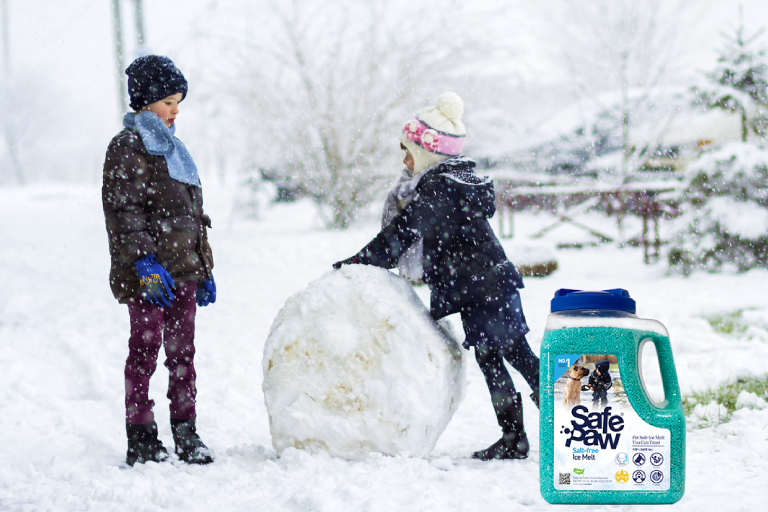
As winter sets in and our paths are encrusted with ice and salt becomes a trusted ally in combating these slippery obstacles. Yet, have you ever paused to question – how does salt melt ice? Let’s dig into the heart of this icy phenomenon, unraveling the science behind how salt succeeds in turning solid ice back into liquid water and ensuring safer mobility during the frosty season.
Unraveling The Science: How Does Salt Melt Ice?
Ice is made up of water molecules arranged in a compact and firm lattice structure. Salt, or sodium chloride (NaCl) as chemists would call it, impacts this structure via a process termed freezing point depression.
Concrete Safe Ice Melt
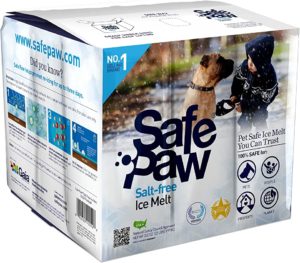
Pet Friendly Ice Melt – Safe Paw!
The Original and the #1 Child and Pet Safe Ice Melt for over 20 years. Guaranteed environmentally safe – will not harm waterways and sensitive wetlands.
The Role Of Salt In Lowering The Freezing Point
One of the ways that salt goes about its ice-melting mission is by causing the freezing point of water to plummet. While pure water will freeze at 0 degrees Celsius (or 32 degrees Fahrenheit), the introduction of salt will send the freezing point on a downward spiral. This happens because the salt gets in the way of the orderly arrangement of water molecules, posing a challenge to them when they try to form into solid ice crystals.
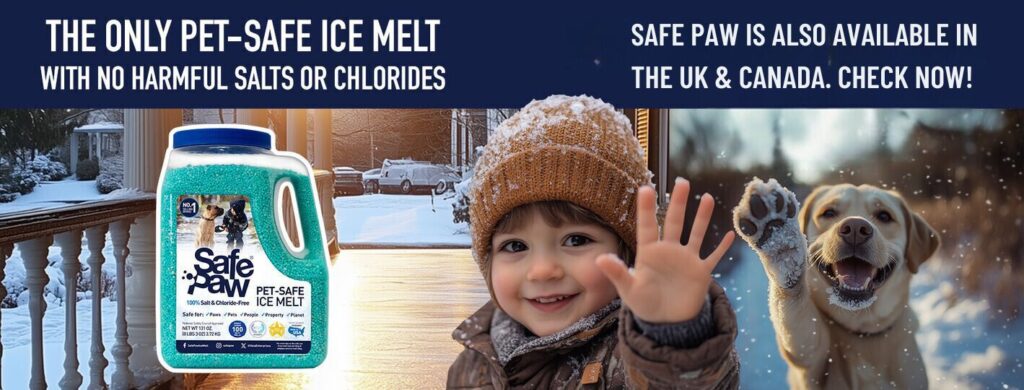
Creating Brine: Salt’s Icy Interactions
When you scatter salt on ice-glazed surfaces, it dissolves into any available moisture, whether that’s from ice or snow, creating a solution dubbed brine. Brine’s superpower is its ability to stay liquid even when the mercury dips below zero, courtesy of its lower freezing point than pure water.
Shattering Ice: How Salt Affects Ice Crystals
When salt comes into play, the integrity of ice crystals takes a hit. The ions from the salt intrude upon the cohesion between the water molecules, barring them from creating tight bonds. This interference results in the ice crystals breaking down and readily melting, transitioning from solid ice back into liquid form.
Pet Safe Ice Melt – Safe Paw
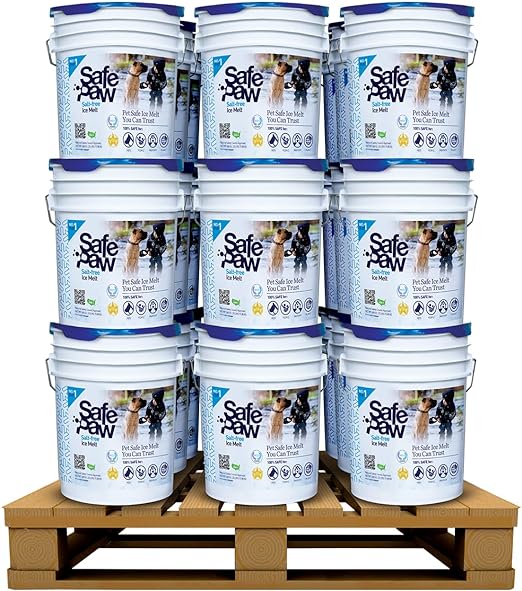
Safe Paw, Child Plant Dog Paw & Pet Safe Ice Melt -35lb, 36 Pails

Safe Paw, Child Plant Dog Paw & Pet Safe Ice Melt -22lb, 100Bboxes
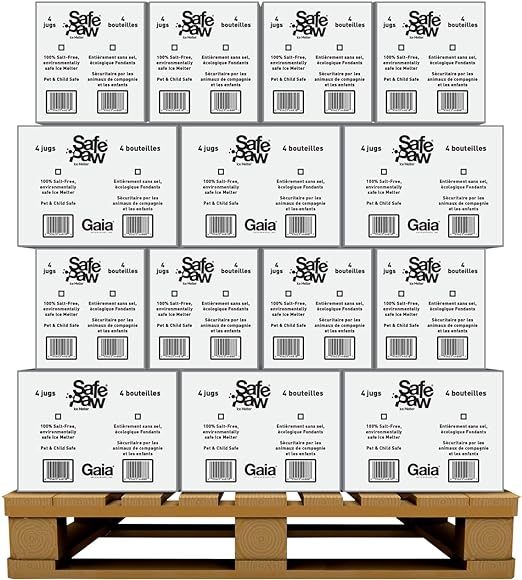
Safe Paw, Child Plant Dog Paw Pet Safe Ice Melt, 160 Jugs
Pet Products Powered By EzPz.pet
Factors Modulating Salt’s Ice-Melting Efficiency
Salt has proven to be an effective agent in melting ice, but its performance can vary under different circumstances. Temperature is a key player here, as salt’s ice-melting prowess diminishes at extremely cold temperatures. Moreover, the salt concentration in the brine and the length of contact between the salt and ice also play roles in determining how effectively the ice melts.
Salt Vs. Other Deicing Agents
While saltworks, other substances like calcium chloride, magnesium chloride, and urea can also tackle ice. Despite these alternatives, salt’s reputation as a cost-effective, readily available, and generally efficient deicer under most winter conditions makes it a popular choice. But is it the best choice? Certainly not. We have discussed this in several articles on this website. Salt along with all the chemical-based ice melt solutions is not safe for your pets, property and planets.
It is important to know how to clear ice and snow safely and effectively as winter approaches. Some de-icing agents are better than others, and some can be toxic to the environment while endangering pets. In this section, we shall look at alternatives for winter salt among other de-icers without losing focus on ice melt safety.
Winter Salt Alternatives
Rock salt is the most commonly used deicer. However, there are greener choices:
- Calcium Magnesium Acetate (CMA): CMA is often presented as a safe alternative because it does not corrode metal surfaces much nor damage concrete as traditional salts do; it does not kill plants that grow around it and is biodegradable. Nonetheless, CMA also has some disadvantages. It’s very much more expensive and underperforms in extreme cold, rendering it less practical in areas with harsher winters.
- Sand: Although sand cannot melt snow/ice, it can provide traction on icy surfaces without damaging the environment. Sand offers a good grip on slippery floors without harming the environment through chemical abuse. It does little to melt ice, which can lead to hazardous conditions persisting longer than they might with active melting agents. Additionally, sand can accumulate in unwanted areas, potentially clogging drains and requiring clean-up when the snow and ice melt.
- Urea: Urea is different from clay. It acts as a fertilizer when the soil warms up again after winter. Urea is easy on plants and concrete compared to a tough chemical deicer. Besides, this type of urea-based ice melt product is pet-friendly too. Urea performs like classical salts by lowering the water’s freezing point but has no negative environmental effects such as chloride washout which spoils aquatic life forms or soils’ health.
De-Icing Agents
Various types of de-icing agents can be found- each with its own advantages and disadvantages:
- Chemical-based Agents: These include salts like sodium chloride, magnesium chloride, and newer blends designed to lower the freezing point of water. The quickness and effectiveness of these chemicals come at a cost because they destroy plants or corrode surfaces.
- Mechanical Methods: These include plowing, shovelling, and using snow blowers. Removing snow through physical means is very effective as well as environment-friendly. However, it requires more manual labour and may be infeasible in large areas.
Winter Safety Tips
Safe navigation during winter’s icy conditions is vital. Consider following these tips:
- Clearing Sidewalks and Driveways: Always remove snow and ice from walkways regularly so that there will not be any accumulation. When applying chemical de-icers be sure to use them sparingly taking care not to cause environmental damage.
- Using Ice Melt Sparingly: Too much ice melt can harm your property or the ecosystem. Follow the instructions provided by the manufacturer.
- Wearing Appropriate Footwear: Footwear with good traction or slip-resistant soles can help prevent slips on icy surfaces.
- Alternative Transportation Options: If you cannot navigate your driveway or route to work safely, perhaps public transport is best for you.
Safe Paw is one environmentally friendly option. Thus, when looking at environmentally friendly options besides traditional salts, take into account what are called “green” de-icing products such as Safe Paw rather than rock salt or other melt substitutes like clay which are eco-friendly. Striking a balance between effectiveness and safety while considering environmental friendliness will therefore inform your choice this winter season.
Gaia Enterprises Inc. delivers 100% pet-safe and environmentally friendly winter products. Safe Paw, our flagship product, is the #1 selling pet-safe ice melt that does not harm pets, safe if ingested, and safe on all types of concrete.
Thinking Of The Environment
Though salt excels in deicing, its environmental toll can’t be overlooked. Runoff from salt used in deicing can sneak into water bodies and the soil, posing threats to aquatic creatures and plant life. Therefore, it’s critical to apply salt mindfully and stay informed about its environmental implications.
Wrapping Up
Now you have a clearer picture of how does salt melt ice. Salt’s strength in this endeavor stems from its knack for lowering water’s freezing point and disrupting the crystallization process of ice. Understanding the science behind these processes not only allows us to appreciate salt’s deicing capabilities but also reminds us of the importance of considering its environmental impact. By researching alternative deicing methods and being conscious of our usage, we can navigate the winter months safely while also preserving our precious ecosystems.
Other Ice Melt Products
Traction Magic
Stay safe on slippery surfaces with a product that’s 100% natural and safe for pets, people, and your property. Use Traction Magic on sidewalks, steps, or as instant traction for your car.
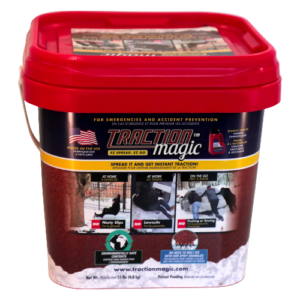
Safe Thaw
Imagine an ice melt you can put down and never worry about. It won’t harm pets, kids and your property. That’s Safe Thaw. Unlike anything else on the market, Safe Thaw can change how winter affects our planet.
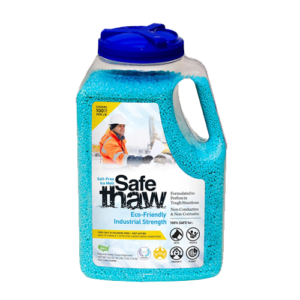
Walk On Ice
Prevent slips at home, work or on the go, The handy disposable canister can be taken everywhere, with the same 100% naturally occurring minerals that provide instant traction on ice or snow.
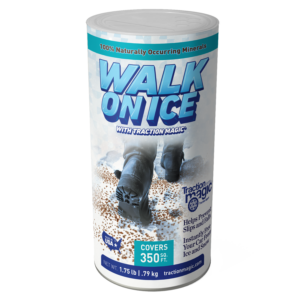
Safe Thaw
Imagine an ice melt you can put down and never worry about. It won’t harm pets, kids and your property. That’s Safe Thaw. Unlike anything else on the market, Safe Thaw can change how winter affects our planet.

